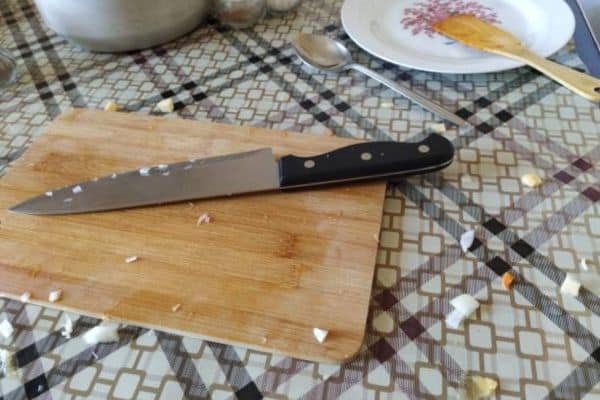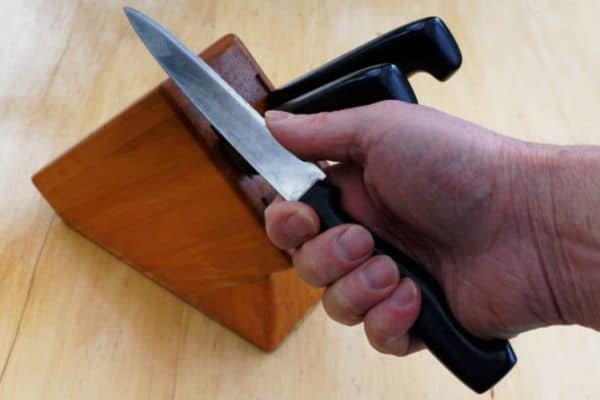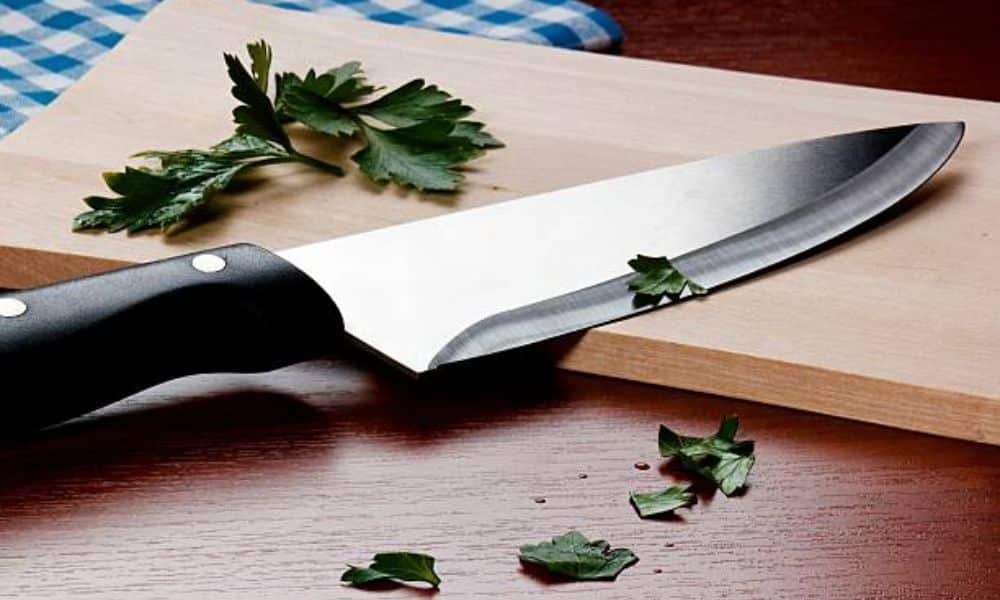Last week, I tried slicing a ripe tomato. The knife slipped and crushed it. Juice ran everywhere. That’s how I learned I didn’t know how to tell if a knife is sharp. A sharp knife cuts clean. It feels smooth and easy. A dull one drags, making food prep harder and less safe. In my kitchen, sharp knives mean better control and faster meals. You don’t need fancy gear to test sharpness. Simple tricks work. I’ve used them for years, and they’ve never failed me.
What Makes a Knife Sharp (Or Dull)?
A sharp knife has a fine edge. It cuts clean with little effort. A dull knife feels slow. You press harder, and food slips.
The edge is what matters most. Sharp knives have smooth, thin edges. Over time, that edge bends or flattens. This is called a burr. It makes the blade feel blunt.
Cutting on hard boards, hitting bones, or even daily use wears down the blade. You don’t always see the damage. But your hands will feel it.
How to Tell If a Knife Is Sharp: 5 Easy Tests

You don’t need tools or tech to test a blade. Just your hands, eyes, and a few simple items from your kitchen. These quick tests show you how to tell if a knife is sharp — safely and clearly.
Let’s walk through each one.
Paper Test – Most Reliable at Home
What it is:
Slice through a sheet of paper with your knife.
How to do it safely:
Hold a piece of printer paper in one hand. Use the knife to cut from top to bottom with a gentle stroke. Don’t force it.
What the results mean:
A sharp knife cuts clean, with no snagging. A dull one tears or skips.
Tomato Test – Quick and Visual
What it is:
Use a tomato to test your edge.
How to do it safely:
Place a tomato on a stable board. Set the knife on top and pull back gently. No pushing.
What the results mean:
A sharp blade breaks the skin with ease. A dull one slides off or squashes the tomato.
Thumbnail Test – Careful, Effective
What it is:
Use your thumbnail to feel the edge.
How to do it safely:
Rest the blade gently across your thumbnail. Don’t press or drag.
What the results mean:
A sharp edge bites and stays still. A dull one slips or feels smooth.
Visual Light Test – Look for Dull Spots
What it is:
Use light to check the blade’s edge.
How to do it safely:
Hold the knife under a light source. Tilt it until the edge reflects.
What the results mean:
A sharp edge won’t reflect light. A dull edge shows shiny spots.
Onion or Herb Test – Real-Cooking Feel
What it is:
Cut the food you use every day.
How to do it safely:
Try slicing green onions or parsley. Focus on the first slice.
What the results mean:
A sharp knife glides without crushing. A dull one smashes or bruises.
Signs Your Knife Is Too Dull

Ever sliced a tomato and ended up with mush? Or tried to cut herbs and bruised them instead? That’s your knife talking — it’s time for a checkup.
A dull knife doesn’t slice. It slides. It crushes soft food and skips on smooth skin. You feel the need to push harder. That pressure? It means less control and more risk. Your prep feels slow, sticky, and messy
Why a Sharp Knife Is Safer Than a Dull One
It sounds backwards, right? A knife seems more dangerous. But that’s a kitchen myth — and one worth cutting through.
Needs more force. You push harder. The blade slips off the food and heads straight for your fingers. That’s how most kitchen cuts happen—not from razor-sharp blades, but from dull, tired ones. If you’re using a worn-out knife, it might be time to upgrade to something sharper and safer. Check out the Best Kitchen Knife Set Under 100 to find affordable, high-quality options that make cooking safer and easier.
On the other hand, moves with control. It goes where your hand tells it to. Less pressure. More precision. That means fewer slips and safer prep.
How to Keep Your Knives Sharp Longer

A little care goes a long way. These habits will keep your blade ready, day after day.
First, hone it often. Honing isn’t sharpening — it just realigns the edge. Use a honing rod. Hold the at a slight angle. Give it 3 to 5 light strokes on each side. Do this once or twice a week.
Next, store it right. Tossing in a drawer dulls the edge fast. Instead, use a wooden block, a knife strip, or a sheath. Keep the blade safe from bumps and scratches.
Last one — hand-wash only. The dishwasher may seem easy, but hot water, steam, and banging around dull blades can be fast. A soft sponge and warm water are all you need.
Do You Need a Pro to Sharpen It?
Most home cooks can sharpen their own knives — but only to a point. Some jobs need a pro touch. It depends on your tools and your time.
For quick upkeep, try a pull-through sharpener. It’s fast, simple, and works well for most kitchen knives. Great for beginners. Want more control? Use a whetstone. It takes practice, but it gives the best edge.
FAQs
How often should I check knife sharpness?
Check once a week. This keeps your blade in top shape. Use a paper or a tomato for a fast sharpness test.
Can a dull knife be re-sharpened?
Yes. Most dull blades can be fixed. Use a whetstone, a pull-through tool, or visit a pro. Don’t wait too long. Worn edges take more work.
What’s the best knife for beginners?
Start with a chef’s knife — 8 inches is ideal. It’s simple, balanced, and fits most tasks. Add a paring and a serrated one. That’s all you need.
Conclusion
A sharp knife makes every cut feel smooth. It gives you control. It keeps your fingers safe. You waste less time and enjoy prep more.
You now know how to spot a dull edge. You’ve learned easy ways to test sharpness. You’ve seen how to care for your knives the right way.

